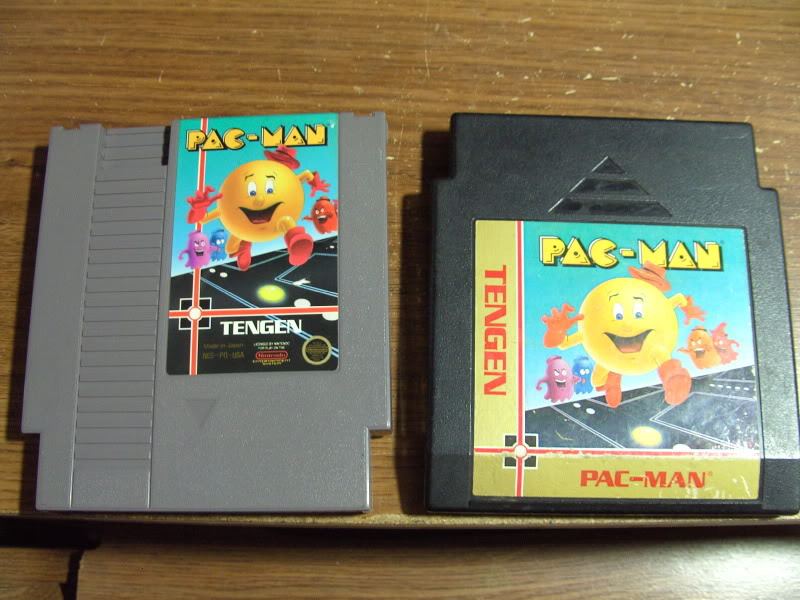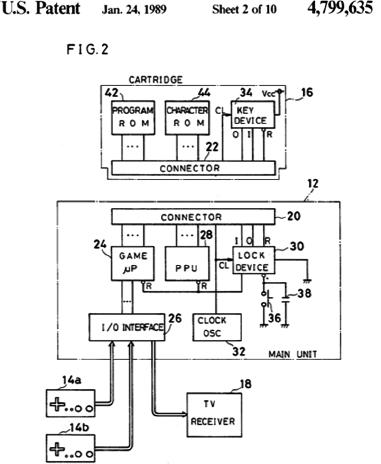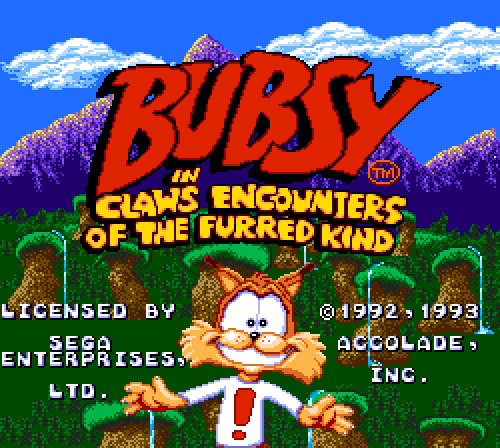Unlicensed cartridges for consoles and their impact on the gaming industry

Manufacturers of video game consoles do not like when the rules are violated. But it still happens. Technically gifted people inevitably seek to subordinate the platforms to their will, despite the danger of litigation and the desire of the owners of these platforms to protect their large-scale investments. There are many examples of such situations, the most notorious of which was the Game Genie case . (In fact, recently in Canada, Nintendo won a copyright case with the seller of flash cartridges and other devices for modification.) But it is worth noting that if there were no such cases, the gaming industry would be completely different now. And today we will explain why.
“We were the first third-party developers of video game cartridges, and knew that we were opening a completely new business niche. We are not just at the right time in the right place. We created the necessary technologies, fought with lawyers and fought off Atari's attempts to block the sales channels of our product. ”
David Crane, one of the founders of Activision, discussed with Gamasutra the difficulties created by Atari after the release of their product in 1979. Activision was formed by a group of Atari developers who felt that the company did not pay tribute to their work. Atari has spent many years in legal battles with Activision, but she never managed to close the company. This step was right for Activision, which is still with us, but led to a glut of Atari 2600 game developers. Many of them did not understand what they were doing. The lack of quality control in the industry led to the collapse of the video game market in 1983 .

The official licensed version of Tengen's Gauntlet game beside the unlicensed version. (source: True Viral News )
The history of the company Tengen, has violated all the rules
Atari's corporate history is rather chaotic and consists of many erroneous moves and dead ends .
Over the years, the company and its side projects have made a lot of mistakes. Perhaps the greatest of these is the poor performance of the controversial licensing policy of Nintendo, a company that has learned a lot from Atari's misadventures with the 2600 console.
Nintendo of America, seeing a huge amount of low-grade products released on the Atari 2600, poor quality control and even pornographic games, adopted a much more rigorous approach to licensing. The creator of NES running Howard Lincoln limited the number of games that one company could create, managed the distribution of cartridges and took a substantial part of the proceeds.
Naturally, Tengen, a contractor of Atari's subsidiary Atari Games, irritated these standards because it limited the possibilities for producing games for the console. In the beginning, she was successful; her most famous game was RBI Baseball , but in December 1988, the company began an antitrust case against Nintendo , accusing it of anti-competitive behavior.
(Complicating the situation was that, among other things, Tengen released the Tetris version in the United States, not receiving rights from the USSR. Nintendo itself acquired the rights to this game , which led to another legal battle and further deterioration of relations between the two companies.)
In many ways, Atari Games had an advantage in this case, because if Nintendo won, then, as Chicago Tribune author Dennis Lynch noted during the litigation, the entire gaming industry would be at risk.
“Which side will be a regular consumer?” Obviously Atari Games, ”Lynch wrote. “If she wins, more games and cartridges will be available to users. If Nintendo wins, the negative consequences for the computer industry will be threatening. ”
However, there was a problem. Atari Games has taken a step that, at best, can be considered an unintentional mistake, and at worst a fraud. The secret of Nintendo's control over the gaming market was the addition of a 10NES security chip, which did not allow unlicensed game creators to make games for the console.

Tengen's 10NES Chip, created with drawings from the United States Copyright Office.
It was an effective defense, but the game makers still found a way around it. Other unlicensed cartridge makers, such as Color Dreams and Camerica, circumvented the chip with negative voltage spikes . However, Atari Games took a much more controversial approach: it turned to the US Copyright Office and requested the code 10NES under a false pretext.
This justified the position of Nintendo in the court case, which as a result was considered in 1992 in the US Court of Appeal.

Nintendo patent protection scheme
“Having received a copy of the code from the Copyright Office, Atari created intermediate copies of the program. Atari made photocopies of the documents from the Bureau, analyzed the chips and manually copied the object code 10NES from the analyzed chip, ” stated in the case analysis . “Atari then pasted this copied 10NES code into the computer, which helped to figure out the design of the program. The district court ruled that this interim copying violated Nintendo’s copyright. ”
It was completely different from reverse engineering in a “clean room,” and hit Atari Games — what seemed like a winning operation turned into a familiar example of copyright infringement.
Fortunately, the decision on another case at about the same time answered many similar questions from the Atari Games Corp. case . vs Nintendo of America Inc.
“It was one of the first major cases in which the licensee spoke out against Nintendo, and it had an avalanche effect. ... Atari sued Nintendo in the same case, the Federal Trade Commission launched an investigation against Nintendo, [and] this actually forced Nintendo to relax its licensing requirements. "
Norman Caruso, the creator of The Gaming Historian , told The Register about the impact of Tengen’s anti-trust lawsuit against Nintendo on licensing rights . Even though Tengen lost out miserably and was effectively barred from creating games for NES, a warning was issued for Nintendo’s policy and, as a result, it changed the licensing standards.

Accolade's unlicensed Ishido: the Way of Stones game for Sega Genesis. ( Museum of Play )
How Sega tried unsuccessfully to "squeeze" the creators of unlicensed games, catching them in a lie
At about the time when the Federal Appeals Court was trying to find out the details of the Atari Games case, the US Court of Appeals for the Ninth Circuit tried to figure out the problem with the rights of third-party licensees.
And he did it on the example of a very similar case related to Sega Genesis, not NES, but almost all the circumstances were the same.
The video game developer Accolade , who worked with a variety of consoles and computing platforms from the early 1990s, did not want to become the exclusive licensee of Genesis. But that was exactly what Sega demanded in those days. Like Atari Games, Accolade attempted to bypass the security systems of the console creator. Unlike Atari Games, Accolade succeeded in this, except for the storm that broke out.
Accolade was able to understand the reverse development of the console with just a few games and the Genesis version. The company turned the third-party code into a kind of development kit.
Thanks to reverse engineering, a very limited copy protection was found. Sega was worried about piracy in the Taiwan market, and she added her own security tools to protect herself from pirated cartridges. The console used a proprietary Sega system called TMSS (trademark security system, trademark protection system). It was installed in Genesis III, which at that time was the latest version of the console.

Bubsy in Claws Encounters of the Furred Kind, one of the most famous Accolade games for Genesis. This version is unlicensed.
TMSS was literally the minimum security measure. Unlike the physical chip used in each Nintendo cartridge, TMSS is a simple initialization code, approximately 20-25 bytes long, containing the letters SEGA. When this code was added to the cartridge, he displayed a message telling the user that the cartridge was “manufactured or licensed by Sega Enterprises Ltd”.
From the point of view of digital rights management, this system was supposed to catch violators for lies, which is a rather strange way of protection.
“In truth, TMSS was a terrible implementation of DRM, even at the already low standards in the industry,” wrote Aaron Pejanovski and Jason Schulz in their recent book The End of Ownership .
This small code stub and the message displayed on the screen became the basis of the Sega Enterprises Ltd. case . v. Accolade Inc. which was considered in the Court of Appeals for the Ninth District of the United States just a month later, Atari Games Corp. vs Nintendo of America Inc.
Several questions arose here: was this code so significant that its theft could be considered copyright infringement? Has the process performed by Accolade for obtaining this code violated Sega's copyright? Did Accolade mislead users by adding an untrue message about Sega licensing the game? The lower court took the side of Sega in this case, but the Court of Appeal made a completely different decision, especially with regard to disassembling. Important quote:
With regard to the video game programs contained in the Accolade game cartridges, there is no evidence that Accolade was eager to avoid creative work. Most of the games released by Accolade for the Genesis console were originally designed for other hardware systems. Moreover, Accolade did not seek to avoid standard payment and did not copy the Sega code. She wrote her own procedures based on what she learned during disassembly. In general, these facts indicate that, although Accolade's ultimate goal was to release Genesis compatible games for sale, the direct purpose of copying the Sega code, that is, directly using copyrighted material, was to study the functional requirements of Genesis compatibility to modify existing games.
The court decision opened up very important opportunities for the computer industry. It acknowledged that “when there is a legitimate reason for obtaining such access, from the point of view of the law, disassembling is a fair use of copyrighted work”. In other words, the decision actually made legal reverse engineering in order to ensure consoles compatibility.
What about the problems with the trademark and the fake labeling indicated by Sega? The court came to the conclusion that Sega, and not Accolade, is responsible for the conflict, because in the end the code had a functional application.

Genesis licensed Bubsy version by Sega.
It was a big win for Accolade, which led to a good game licensing deal with Sega and made important changes in the computer industry.
Nowadays, third-party game developers have a lot of power over the video game industry, to the extent that their presence on the console can affect its success or failure. But these two cases were a good reminder that this was not always the case.
The case of Atari Games, despite the secret exploitation of the Copyright Office for reverse engineering of the security chip, could have been won anyway, if Atari Games did not go to fraud.
Fortunately, at that time it was not the only case that dealt with this problem, otherwise the market condition would be rather sad. As the authors of The End of Ownership note, the Accolade case greatly influenced the legislation as a whole and led to the creation of “rules of the road” - Audio Home Recording Act (AHRA) and Digital Millennium Copyright Act (DMCA).
And although Accolade with Atari Games no longer exists, there is another game developer for Genesis, who repeated the same thing that Accolade did. This PC game maker did reverse engineer the Sega platform and turned its Genesis success into a trump card. Thanks to her, there was a profitable deal for him that he would never have been able to get from Nintendo.
This company was Electronic Arts , which has become the largest publisher today.
All Articles